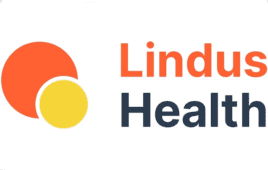 Founded in 2016, PolarityTE (Nasdaq:PTE), a company focused on developing regenerative tissue products to address unmet medical needs in chronic wounds, has recently commenced a Phase 3 pivotal study involving patients with diabetic foot ulcers (DFUs).
Founded in 2016, PolarityTE (Nasdaq:PTE), a company focused on developing regenerative tissue products to address unmet medical needs in chronic wounds, has recently commenced a Phase 3 pivotal study involving patients with diabetic foot ulcers (DFUs).
In addition, the FDA granted its investigational SkinTE product Regenerative Medicine Advanced Therapy (RMAT) designation.
PTE shares, however, skidded 30% to $2.97 today after the Salt Lake City-based company announced a 1-for-25 reverse stock split. Yesterday, the company reported quarterly earnings that missed analysts’ expectations.
The company went public in 2017 after entering a reverse merger with Majesco Entertainment Company, a video game company.

Richard Hague
PolarityTE CEO Richard Hague is optimistic about its prospects given the unmet need for non-healing chronic wounds, the ongoing Phase 3 study of SkinTE and the FDA’s decision to grant it RMAT status.
In the following interview, Hague touches on the challenges of treating non-healing chronic wounds and how the company’s SkinTE product can help.
The conversation has been edited and condensed.
Could you provide an overview of the problem of non-healing chronic wounds, which your company is working to solve?
Hague: The FDA sees non-healing chronic wounds as a significant problem. Diabetic foot ulcers are significantly important. Not only do these patients have wounds, but they also have diabetes, so their health is compromised. And if the wounds are left untreated or are just not managed successfully, they often lead to amputation, which directly impacts mortality. It’s a cascade effect. That is very challenging for physicians and their patient populations. Non-healing chronic wounds have a significant impact on quality of life and ultimately on lifespan in general.
And the growing diabetes rate is only compounding the problem?
Hague: That’s exactly right. When researchers looked at the rate of increase from 2010 to 2015, even accounting for the increased prevalence of diabetes, you see a 50% increase in wounds.
What is the current treatment landscape like for diabetic foot ulcers?
Hague: The standard of care involves offloading and debridement of the wound to get back to healthy tissue and then dressing the wound with some material to help protect it. Often, offloading will allow a wound to heal itself if it is not too deep and the patient is compliant.
Unfortunately, many of these wounds are bigger, and many of the patients aren’t compliant, so these wounds become larger. Then the next phase of treatment generally focuses on using a material to try to close the wound. So the most common products out there are described as skin substitutes. It’s a rather extensive category that includes various products derived from amnion. They can also be animal-sourced tissue.
Skin substitutes are cellular tissues for the most part, and they’re placed over the wound again. They follow the same procedure where they debride the wound back to as healthy as tissue as they can get. They place these materials over the wound with the idea and hope that the circumference of the wound, where there are potentially some healthy cells, will begin to migrate into these scaffold-like materials. They’re hoping for a contraction of the wound by using these materials.
Unfortunately, when these wounds are larger, you’re talking about a large area that has to be contracted. For skin substitutes to be effective, they often have to be used multiple times. It’s not uncommon for a patient to be treated to come into an office setting every week and get one of these products supplied for up to five, six, maybe even 10 weeks in a row. The goal is to close this wound in a phased approach and get it to heal. It’s time-consuming for the patients. It’s costly. It lends itself to non-compliance if the patient misses visits. It also adds a layer of complexity to an already challenging situation. There’s not a lot of data supporting these products in terms of a consistently high rate of healing of a product.
Where does SkinTE come in?
Hague: SkinTE is potentially effective because the physician takes a small harvest of full-thickness skin from a patient. The size can be slightly larger than a postage stamp up to the size of a business card. They send that full-thickness tissue back to our facility in Salt Lake City. And we manufacture the final drug product out of that material. And we create a paste-like substance drawn up in a needleless syringe and send it back to the physician.
The beauty of our SkinTE product is that it’s cellular. It’s made up of multicellular components and tissue components. So these are full-thickness skin segments that we’re sending back to the patient.
Our data shows that the vast majority of patients that we’ve treated have had an effective outcome with a single application.
The last important part is because we’re using the patient’s own cells, there’s no risk of rejection and the resultant skin that closes the wound is very similar to the native skin. It has pliability, sensation, hair follicles and sweat glands. So the functionality of the healed skin is quite high. That is what we believe differentiates our product considerably from the standard of care.
Could you summarize your current status with the FDA?
Hague: We were originally registered as a 361 HCT/P product, which refers to human cells, tissues or cellular or tissue-based products.
We were on the market for some time and treated upwards of 1,200 patients during our commercial efforts.
We engaged the FDA through a request for designation — a process by which the FDA was requesting companies making other 361 products to reach out to them to determine whether or not we were in the right regulatory category.
Ultimately, due to the mechanism of action of our product, they guided us to the 351 biologics or Biologics License Application (BLA) pathway.
So we took the product off the market a year ago at the end of the enforcement discretion period that FDA had in place for everyone in the 361 space. And at that point, we went full bore towards submitting an Investigational New Drug (IND) to FDA under the BLA process. We submitted last summer and ultimately got approval for the IND in January of this past year.
We got approval for an indication of chronic cutaneous ulcers. Diabetic foot ulcers are under that category, along with venous leg ulcers.
We began finalizing the details around our Phase 3 pivotal study. Now we are under guidance from the FDA.
We are expecting to run two pivotal studies. The second study is something that we will be in discussion with the FDA around.
The current study focuses on patients with diabetes who have Wagner grade 2 diabetic foot ulcers, which refers to deep ulcers. Could you share more on that population?
Hague: Wagner 2s are full-thickness wounds that potentially go down to bone, tendons and capsule. So we’re choosing a difficult wound in this trial to study because we believe our product can be differentiated there.
We just completed a large investigator meeting with 15 sites, and we’re excited about getting those sites up and running to start steadily enrolling this study.
Can you talk more about the RMAT status from the FDA?
Hague: It’s critical because to get an RMAT designation, you need to satisfy a couple of criteria. Number one, the FDA has to agree that this is a severe life-threatening disease that you’re looking to treat. Secondarily, your preclinical data or any experience you have with the product must show the potential to treat this patient population effectively.
Because of our being on the market and having treated a variety of patients both in a formal clinical trial setting and through a variety of case studies, we’ve published a great deal of data on the safety and efficacy of the product. So we believe that that worked very much in our favor when FDA was reviewing our submission and ultimately granting the RMAT designation. So we’re very excited to be at this point now where we have this Phase 3 trial up and running, and we have now, through this RMAT designation, access to FDA in a more accelerated fashion. The RMAT designation gives us better access to the FDA to help guide us and potentially accelerate our development program since they understand the need for this product given the challenge of this patient population.
Filed Under: Biologics



